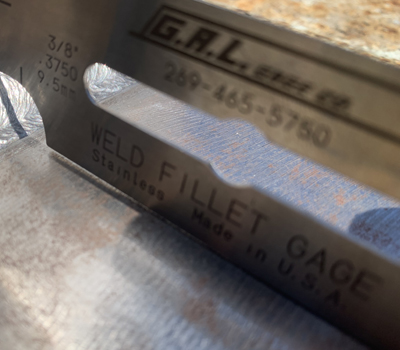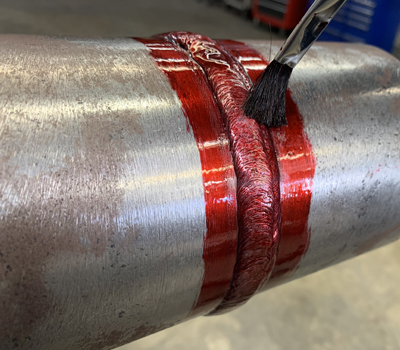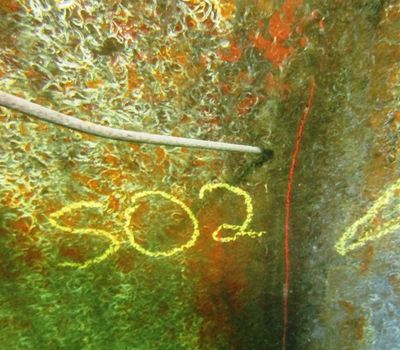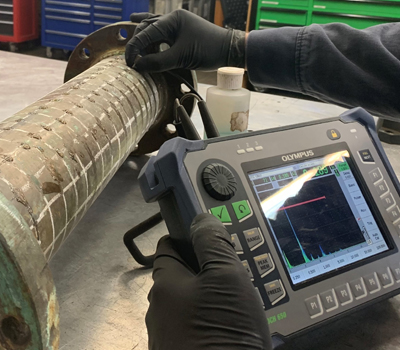
Nondestructive Testing (NDT)
Nondestructive testing (NDT) and inspection services are a core capability of Phoenix and serve as the fundamental constants to determining and maintaining the quality of an asset.
Our vast expertise and knowledge, seasoned Level II inspectors, in-house Level III Examiner, proven solutions, and international reach means you can count on Phoenix for all your NDT needs.

Visual Testing (VT)
Wet-Underwater, Dry Surface, and Dry Chamber
Visual Testing (VT) is the most commonly used NDT service and is the first critical examination technique employed on any inspection. It can be used solely or in conjunction with the other NDT methods, and when employed properly, this technique could find physical damage, corrosion, erosion, and other surface flaws.
Our Phoenix Inspectors are qualified to International Association of Welding (IAW), Naval Sea Systems Command (NAVSEA), and American Society for Nondestructive Testing (ASNT) standards.
Dye Penetrant Testing (PT)
Dry Chamber & Surface
 Dye Penetrant Testing (PT) is a low cost, widely applied inspection method used to check surface breaking flaws in nonporous materials. While most commonly applied to non-ferrous materials such as stainless steel, aluminum, and all other nonmagnetic materials, it can also be applied to ferrous materials. Phoenix PT inspection techniques are excellent for finding surface breaking flaws such as cracks, corrosion, porosity, and laps.
Dye Penetrant Testing (PT) is a low cost, widely applied inspection method used to check surface breaking flaws in nonporous materials. While most commonly applied to non-ferrous materials such as stainless steel, aluminum, and all other nonmagnetic materials, it can also be applied to ferrous materials. Phoenix PT inspection techniques are excellent for finding surface breaking flaws such as cracks, corrosion, porosity, and laps.

Magnetic Particle Testing (MT)
Wet, Dry Chamber, & Surface
Magnetic Particle Testing (MT) is a nondestructive examination (NDE) method used to check surface and near surface breaking flaws in ferromagnetic materials. This inspection technique is excellent for finding surface breaking flaws and near surface flaws.
Phoenix performs both wet and dry magnetic particle testing and inspection services to test for:
- Corrosion-related flaws
- Fatigue cracks
- Laps
- Porosity
- Stress corrosion cracking
- Tears
- Welding defects
Ultrasonic Testing (UT)

Ultrasonic Testing (UT) uses high-frequency sound waves propagated through a medium to detect internal flaws, surface flaws, and material thickness in acoustically sound materials (steel, aluminum, glass, composites, etc.). At Phoenix, our highly skilled operators are able to accurately interpret the results of ultrasonic flaw detectors’ electrical responses for acceptance or rejection of indications. This technique is used for corrosion/erosion surveys, weld testing, and sizing/mapping indications. Some of the UT methods employed by Phoenix include:
- Ultrasonic Thickness Gauging Method (UTG) – Wet, Dry Chamber, and Surface
- Ultrasonic Shearwave Testing Method – Flaw Detection (UTSW)-Wet, Dry Chamber, and Surface
- Flooded Member Testing (FMT) for the presence and level of liquids
